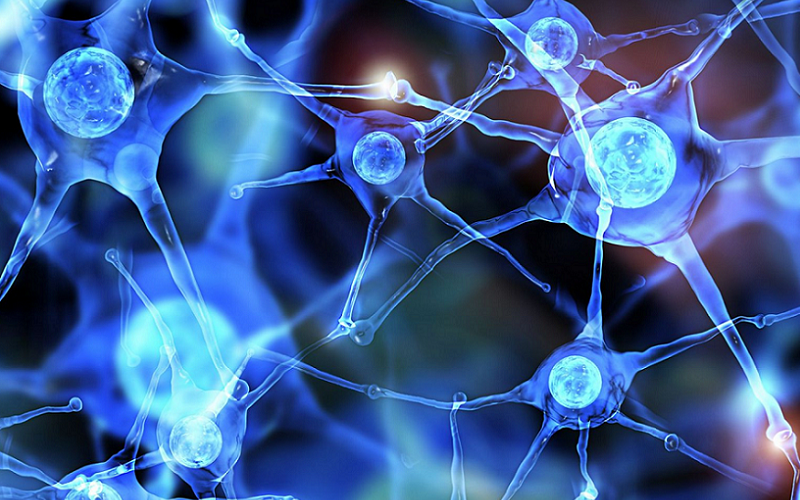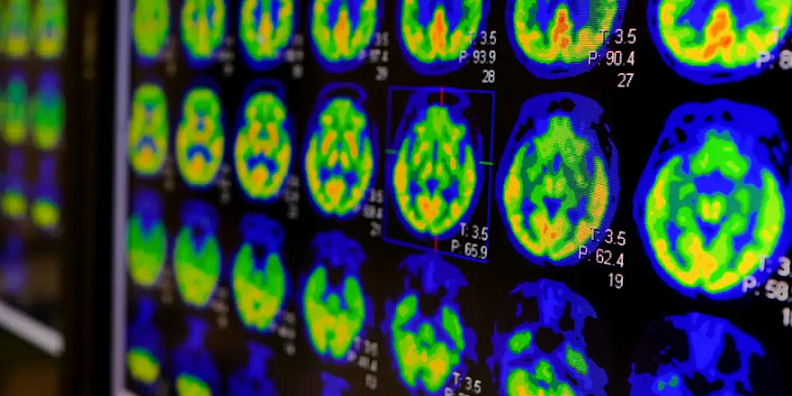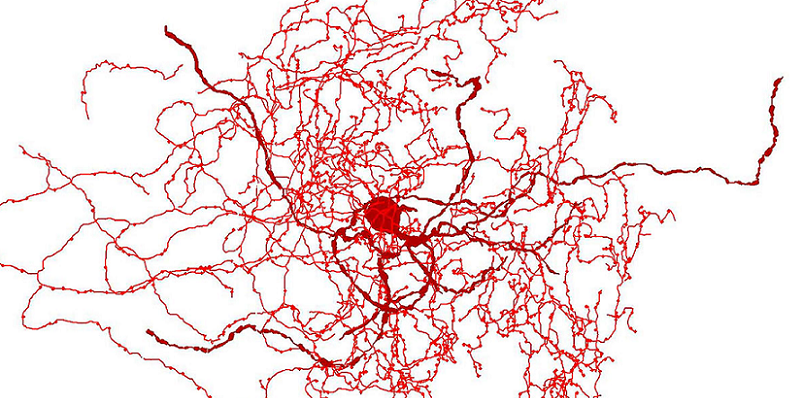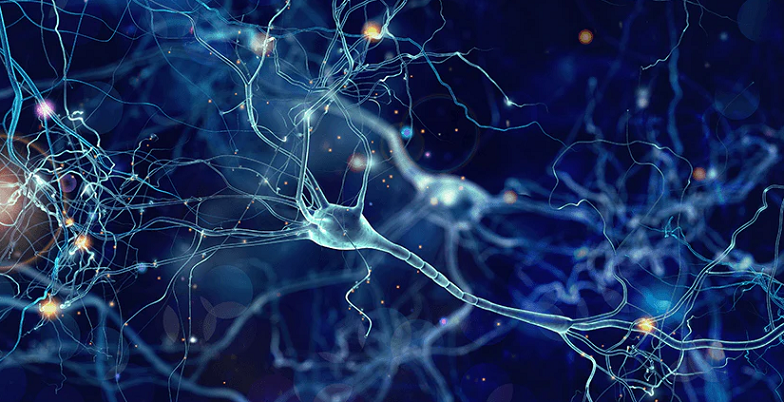
For centuries, the intricate universe inside our skulls has captivated and confounded scientists. Among its myriad mysteries, the potential for brain cells, or neurons, to regenerate has been a topic of debate and wonder. Contrary to long-held beliefs, emerging research now paints a more hopeful picture about the brain’s ability to heal and renew itself. Here we examine the world of neurons, explore the transformational discoveries about brain cell regeneration, and envision the exciting implications these findings hold for the future of neurological health.
Contents
- Introduction to Neurons and Brain Cell Regeneration
- The Basics of Brain Cells
- Understanding Brain Cell Damage
- Brain Cell Regeneration: Myth vs. Reality
- Modern Methods Promoting Neuron Regeneration
- References
Introduction to Neurons and Brain Cell Regeneration
The vast complexities of the human brain have long fascinated scientists, medical professionals, and thinkers throughout history. At the heart of these complexities are neurons, the principal units of the brain and the very essence of our thoughts, emotions, and actions. Yet, one of the most debated topics in neuroscience has been the capability of these neurons to regenerate.
Brief Overview of Neurons and Their Role in the Brain
Neurons, commonly referred to as nerve cells, are the building blocks of the nervous system. These cells are responsible for transmitting information in the form of electrical and chemical signals, acting as messengers between different parts of the brain and between the brain and the rest of the body. Each neuron consists of a cell body, dendrites, and an axon. The dendrites receive signals from other neurons, while the axon transmits the signal forward. This intricate network of communication forms the basis for everything we think, feel, and do.
Importance of Brain Cell Regeneration for Neurological Health
The health of our neurons is integral to our overall neurological well-being. Over time, due to factors like aging, trauma, or disease, neurons can become damaged or die. Historically, the loss of these cells was thought to be irreversible, leading to persistent neurological deficits. However, the ability to regenerate these cells would offer revolutionary possibilities: healing from traumatic brain injuries, slowing or even reversing degenerative diseases, and potentially enhancing cognitive functions.
Evolution of the Concept: Historical Belief vs. Modern Discoveries
The history of neuroscience is rife with evolving beliefs about the brain’s capacity to heal. For a long time, it was a widely accepted notion that the brain was static and unchanging, a belief known as the “fixed brain hypothesis”. This theory proposed that, unlike other cells in the body, once neurons were lost, they could not be replaced. However, with advances in technology and research methods, this theory has been upended. As we progress through this article, we’ll explore how modern discoveries have illuminated the brain’s regenerative potential and what this could mean for the future of neurological health.

The Basics of Brain Cells
Before diving into the mechanisms and wonders of brain cell regeneration, it’s pivotal to ground ourselves in the basics. The term “brain cells” encapsulates more than just neurons; it also includes the supporting glial cells that play a significant role in maintaining a healthy brain environment.
Definition and Classification of Neurons
At its core, the brain is an intricate network of billions of neurons, each working in tandem to process and transmit information. These neurons are as varied as the functions they serve. Based on their roles and locations, they can be primarily classified into three types.
Sensory Neurons
These neurons are the body’s informants. They gather data from sensory organs like the eyes, ears, and skin and relay it to the brain, enabling us to see, hear, and feel. Without sensory neurons, our interaction with the world would be devoid of context and meaning [1].
Motor Neurons
Acting as the executors of the brain’s commands, motor neurons transmit signals from the brain to the muscles. They coordinate everything from the deliberate motions of our fingers typing on a keyboard to reflexive actions like pulling a hand away from a hot surface.
Interneurons
The true communicators of the nervous system, interneurons connect various neurons within the brain and spinal cord, facilitating communication between sensory and motor neurons. They play a crucial role in reflexes and are integral to the brain’s more complex processes like thought and perception.
Importance of Glial Cells in Supporting Neurons
While neurons often take center stage in discussions about brain function, glial cells are the unsung heroes working behind the scenes. These cells, often overlooked in the past, are now recognized as essential players in the brain’s health and function.
Glial cells outnumber neurons in the brain and serve numerous roles, from providing nutrients to neurons to insulating them and enhancing the speed of their signals. They also play a part in cleaning up dead neurons and fighting off infections. Some key types of glial cells include astrocytes, oligodendrocytes, and microglia, each with its unique set of functions.
The Lifespan and Turnover of Neurons
A prevailing myth is that neurons, once lost, are gone forever. This belief stems from the observation that, in many parts of the brain, neurons don’t divide and multiply in the way other cells do. However, the reality is more nuanced [2].
While it’s true that many neurons, especially those in the cerebral cortex, last a lifetime, some areas of the brain, like the hippocampus, do experience neuron turnover. Here, new neurons can be born, a process known as neurogenesis. This turnover plays a role in various functions, notably memory formation and learning.

Understanding Brain Cell Damage
The brain, as intricate and resilient as it is, isn’t immune to damage. Disruptions to the delicate balance and intricate web of neuronal connections can have profound effects on cognitive function and overall neurological health. To truly appreciate the value of brain cell regeneration, one must first grasp the multifaceted nature of brain cell damage, its causes, and its consequences.
Common Causes of Brain Cell Damage
Brain cells, while remarkable, are vulnerable to a variety of damaging factors. Understanding these causes is the first step towards developing preventive measures and therapeutic interventions.
Trauma
Physical trauma, such as that resulting from accidents, falls, or blows to the head, can cause immediate damage to brain cells. Traumatic brain injuries can range from mild concussions to severe brain damage, affecting both the structure and function of the brain.
Disease
Many diseases specifically target the nervous system. Neurodegenerative diseases like Alzheimer’s, Parkinson’s, and multiple sclerosis progressively damage and kill brain cells, leading to declining cognitive and motor functions. Other conditions like strokes can cause sudden and significant neuron loss.
Aging
Natural aging processes can lead to a gradual loss of brain cells. While this isn’t as aggressive as degenerative diseases, over time, the cumulative effect can result in noticeable cognitive changes, such as memory lapses or slowed reaction times.
Environmental Factors
Exposure to certain toxins, drugs, and even prolonged stress can adversely affect brain cells. For instance, excessive alcohol consumption can lead to neuron damage, especially in the brain’s frontal lobe [3].
Consequences of Brain Cell Damage
The ramifications of brain cell damage are as diverse as the causes behind it. Depending on the location and extent of the damage, individuals can experience a wide range of symptoms.
Cognitive Decline
Damage to areas of the brain responsible for cognition can result in issues with memory, attention, decision-making, and problem-solving. Over time, this can progress to severe forms of dementia, where individuals may struggle with even basic daily tasks.
Motor Function Impairment
Damage to regions controlling movement can lead to tremors, difficulty walking, lack of coordination, or even paralysis. Diseases like Parkinson’s specifically target motor regions, resulting in characteristic movement disorders.
Behavioral Changes
The brain is the seat of our personalities, emotions, and behaviors. Damage, especially to the frontal and temporal lobes, can lead to mood swings, impulsivity, aggression, or even depression.

Brain Cell Regeneration: Myth vs. Reality
The ability of the brain to rejuvenate and repair itself has long been a subject of fascination and inquiry. For years, the narrative surrounding brain cells was one of permanence and irreplaceability. However, recent discoveries have started to challenge these age-old beliefs.
Historical Views: The Fixed Brain Hypothesis
For much of the 20th century, a dominant viewpoint in neuroscience was the “fixed brain hypothesis.” This theory held that the brain, once fully developed, remained largely static throughout adulthood. According to this perspective, while the brain could reorganize its connections—a phenomenon known as neuroplasticity—it could not produce new neurons. The number of neurons one had in early adulthood was believed to be the maximum for life, and any subsequent loss was irreversible. This perspective was based on early microscopic studies and the observable effects of brain injuries and diseases, which often led to permanent deficits.
Discovery of Neurogenesis
The turning point in this narrative came with the groundbreaking discovery of neurogenesis—the birth of new neurons. This phenomenon, once believed to be exclusive to early development, was shown to persist into adulthood in specific brain regions.
Pioneering Experiments
In the 1960s, researchers conducted experiments on rats, demonstrating for the first time that adult mammals could indeed produce new neurons. Using innovative labeling techniques, scientists identified newly formed cells in the hippocampus, a region crucial for memory and learning [4].
Key Regions
The Hippocampus and Beyond: While the hippocampus remains the most studied region concerning adult neurogenesis, evidence suggests that other areas of the brain might also harbor this regenerative potential, albeit to a lesser extent. This discovery opened up a whole new avenue of research, exploring the factors that promote neurogenesis and its implications for cognition and recovery.
Factors Influencing Neurogenesis
With the confirmation that new neurons can form in the adult brain, attention swiftly turned to understanding the factors that could enhance or inhibit this process.
Age
Age is a significant determinant. While neurogenesis is robust during early development, its rate declines with age. However, even in older individuals, a certain level of neurogenesis persists, challenging the notion of a completely static mature brain.
Diet
Certain diets and nutrients have been shown to positively influence neurogenesis. For instance, omega-3 fatty acids found in fish oil can promote the birth of new neurons.
Mental Stimulation
Engaging in cognitively stimulating activities, like learning a new skill or solving puzzles, can enhance neurogenesis, particularly in the hippocampus.
Exercise
Physical activity, especially aerobic exercise, has a profound effect on brain health. Studies have shown that regular exercise can significantly increase the rate of neurogenesis in the hippocampus.
Environmental Enrichment
Exposing oneself to diverse and stimulating environments can boost the formation of new neurons. Animals raised in enriched environments with toys, mazes, and social interactions display increased neurogenesis compared to those in standard cages.
Modern Methods Promoting Neuron Regeneration
As our understanding of the brain’s regenerative potential has expanded, so too have the innovative strategies developed to harness and boost this capacity. Researchers and medical professionals are actively exploring methods to stimulate neuron regeneration, with the ultimate goal of treating neurodegenerative diseases, reversing brain damage, and improving cognitive function.
Stem Cell Therapies
Stem cells possess the remarkable ability to differentiate into various cell types, including neurons. Leveraging this property has become a key focus in regenerative medicine.
Embryonic Stem Cells
These cells, derived from early-stage embryos, have the potential to develop into any cell type in the body, including neurons. Researchers are investigating how to guide their differentiation specifically into brain cells to replace damaged or lost neurons.
Induced Pluripotent Stem Cells (iPSCs)
iPSCs are derived from adult cells, like skin or blood cells, that have been genetically reprogrammed to an embryonic stem cell-like state. This groundbreaking technique offers the potential to create patient-specific neuron therapies without the ethical concerns tied to embryonic stem cells [5].
Transplantation
Stem cells, once developed into neurons or neuron precursors, can be transplanted into damaged areas of the brain. Early studies in conditions like Parkinson’s disease have shown promise, though challenges remain in ensuring the successful integration of these cells into existing brain circuits.
Growth Factors and Neurotrophins
Growth factors and neurotrophins are proteins that support neuron survival, growth, and differentiation. They have become a focal point for promoting neuron regeneration.
Brain-Derived Neurotrophic Factor (BDNF)
BDNF plays a vital role in supporting the survival of existing neurons and encouraging the growth and differentiation of new neurons and synapses. Increasing BDNF levels in the brain, either through drugs, gene therapy, or lifestyle interventions like exercise, holds therapeutic potential.
Glial Cell Line-Derived Neurotrophic Factor (GDNF)
GDNF has shown promise, particularly in the context of Parkinson’s disease. By supporting and protecting dopaminergic neurons, which are primarily affected in Parkinson’s, GDNF offers a potential therapeutic avenue.
Advanced Brain Stimulation Techniques
Modern technology has paved the way for novel methods of directly stimulating the brain to promote healing and regeneration.
Transcranial Magnetic Stimulation (TMS)
TMS involves placing a coil over the scalp to generate magnetic fields. These fields can modulate neuronal activity, promoting recovery after brain injury and even enhancing cognitive functions in healthy individuals.
Deep Brain Stimulation (DBS)
DBS involves surgically implanting electrodes into specific brain regions. By delivering electrical impulses to these areas, it’s possible to alleviate symptoms in conditions like Parkinson’s disease and even promote neuronal health.
Promoting Neuroplasticity
While the generation of new neurons is a focus, enhancing the brain’s ability to rewire itself—a process known as neuroplasticity—is equally crucial.
Cognitive Training
Engaging in specific cognitive tasks and exercises can strengthen existing neural pathways and even forge new ones. This “use it or lose it” principle is the backbone of many cognitive rehabilitation programs.
Physical Therapy
After injuries, especially strokes, physical therapy can help the brain “relearn” motor tasks, fostering neuroplastic changes that compensate for damaged regions.
References
[1] When Damaged, the Adult Brain Repairs Itself by Going Back to the Beginning
[2] Single protein prompts mature brain cells to regenerate multiple cell types
[3] Neurorepair and Regeneration of the Brain
[4] Can brain cells regenerate?
[5] Brain repair by cell replacement and regeneration

